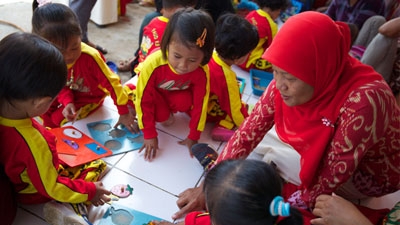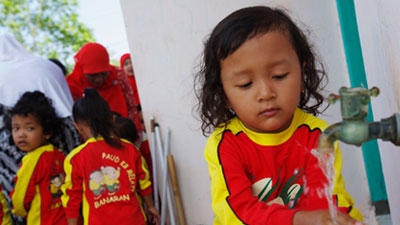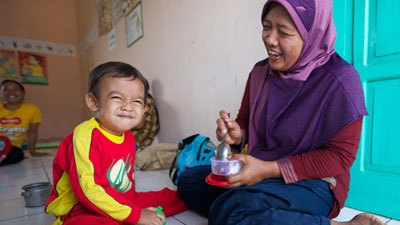Bank Group Contribution
The total cost for the ECED Project is US$127.74 million for 2007-2013. The Bank contributed US$67.5 million with an International Development Association (IDA) credit. The rest of the funds were provided the Government of Indonesia and by development partners, including the Netherlands
Partners
The success of the ECED program relies on strong collaboration between development partners, in particularly the Netherlands, which provided US$25.3 million for project implementation support through the Dutch Education Support Program Trust Fund. In addition, a team of researchers, funded through the Australian Agency for International Development (AusAID) Development Research Award Scheme (ADRAS), helped with the design and implementation of the impact evaluation.
Moving Forward
As the government seeks to expand access to ECED services, it is reviewing the project’s model of service provision to identify strengths and weaknesses in the approach, in order to develop a plan for implementing holistic and integrated early childhood services. In addition, the government is adapting the teacher training provided under the project to be included in its new ECED teacher training program.
Beneficiaries
Before the arrival of ECED centers, the families of Samapuin village on Sumbawa island, West Nusa Tenggara, received early childhood development services from various agencies, such as the Village Health Posts (Posyandu) or the Mothers Groups (BKB), if at all. The ECED program consolidated those services under one roof. “Health posts mothers who have children aged 0 to 5 years that had not received early childhood education from the Mothers Groups (BKB) now have access to parenting education,” says Husnul Khatimah, who works at an ECED center in Samapuin village, Sumbawa island.




